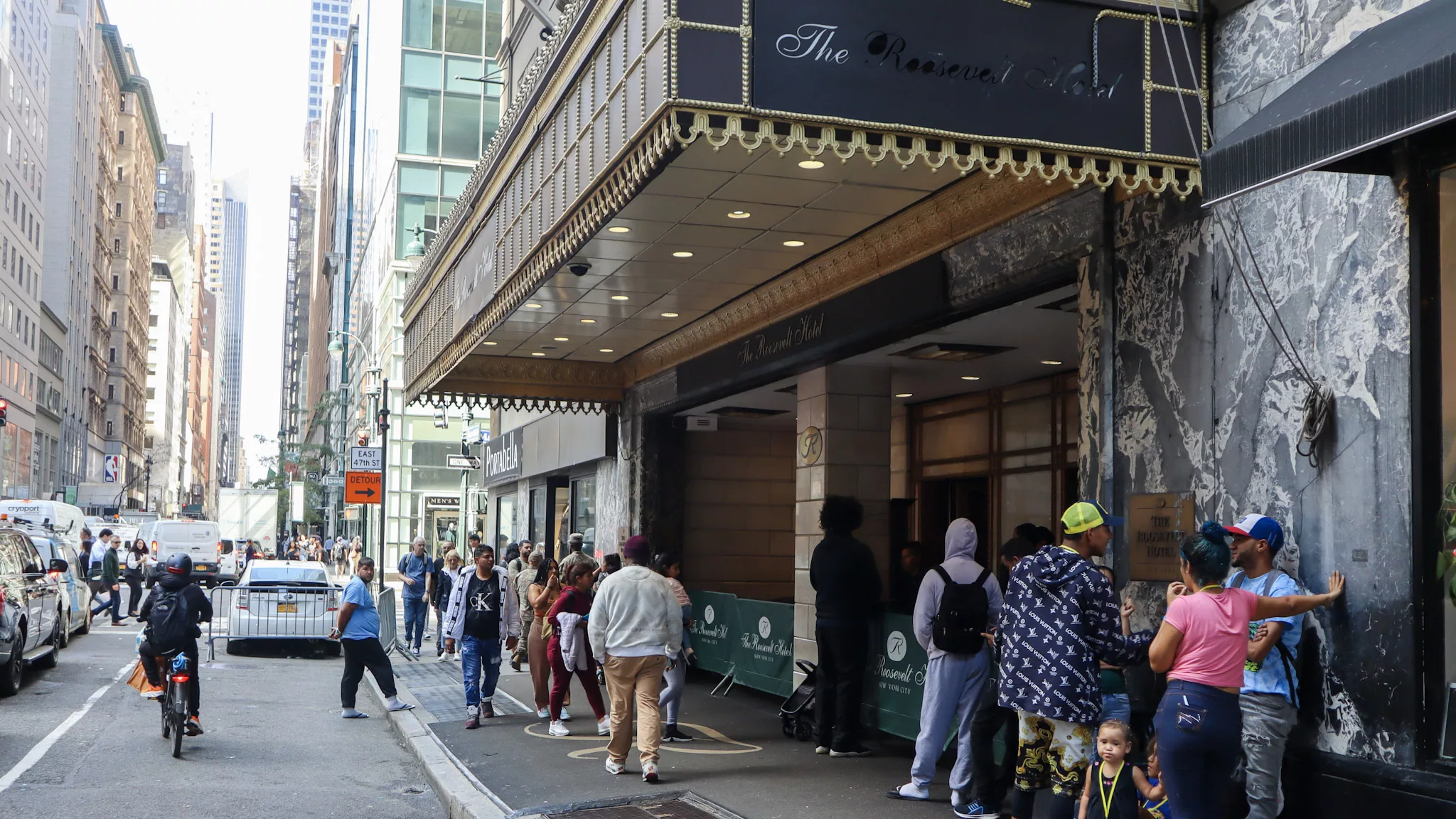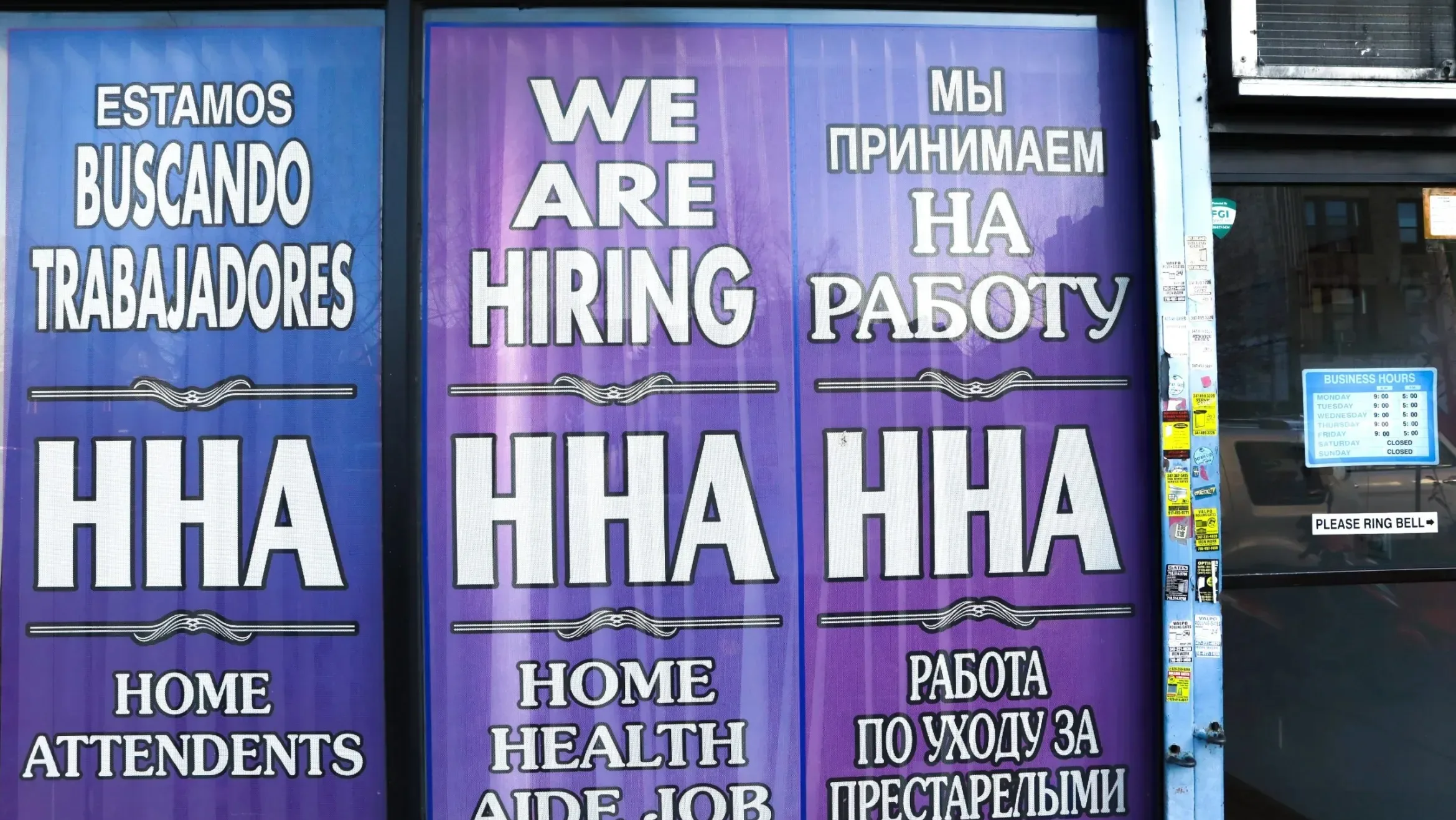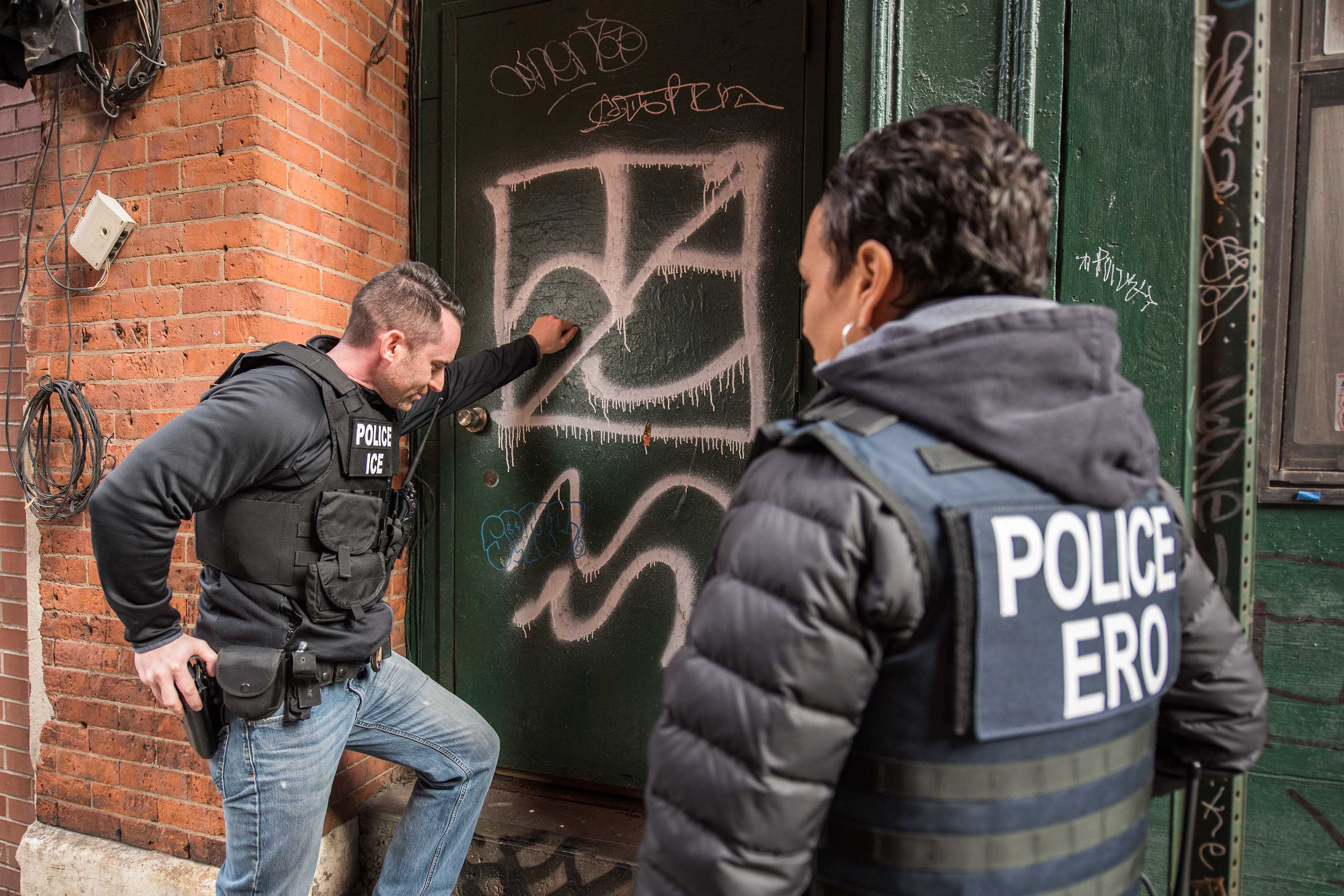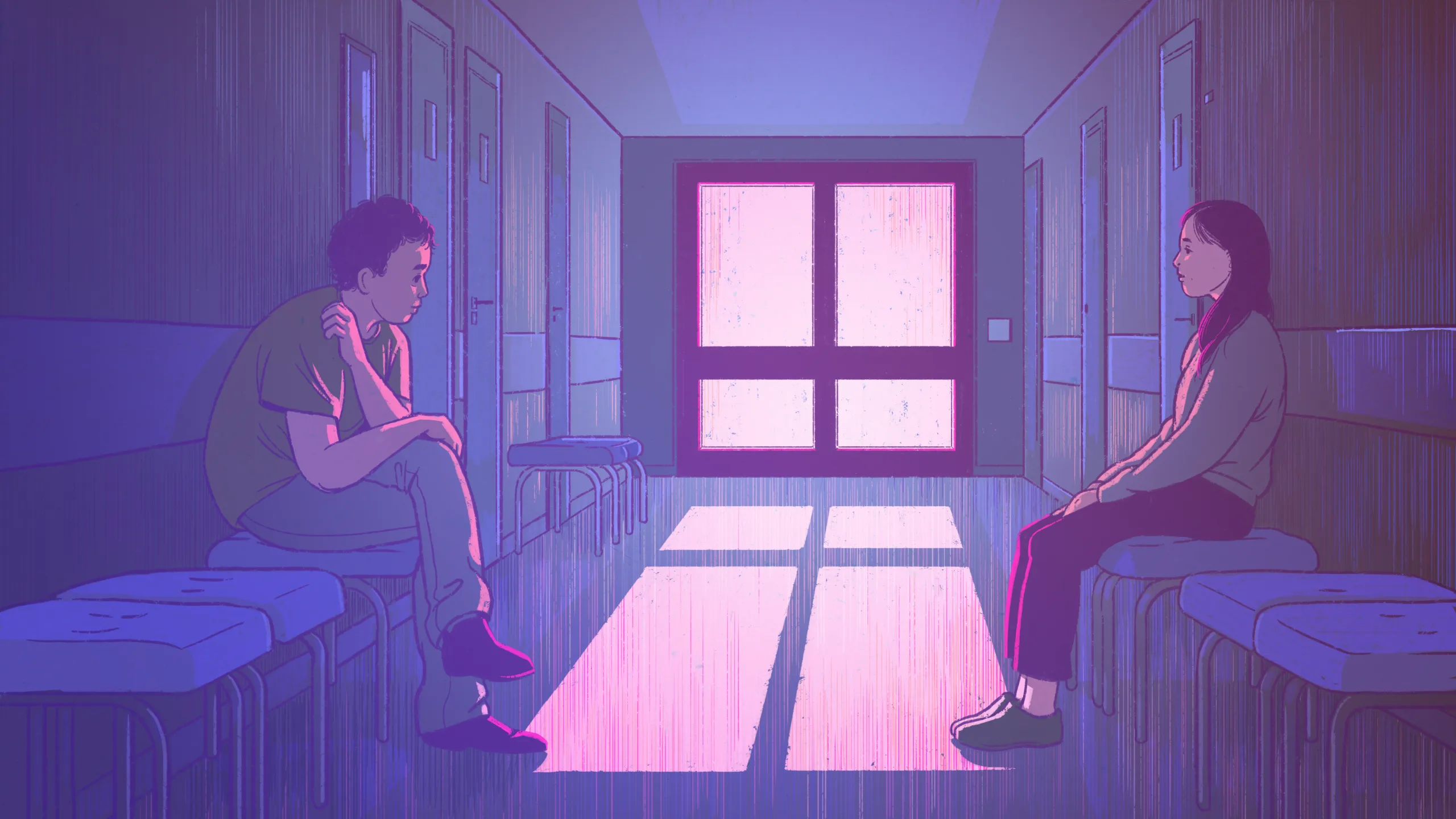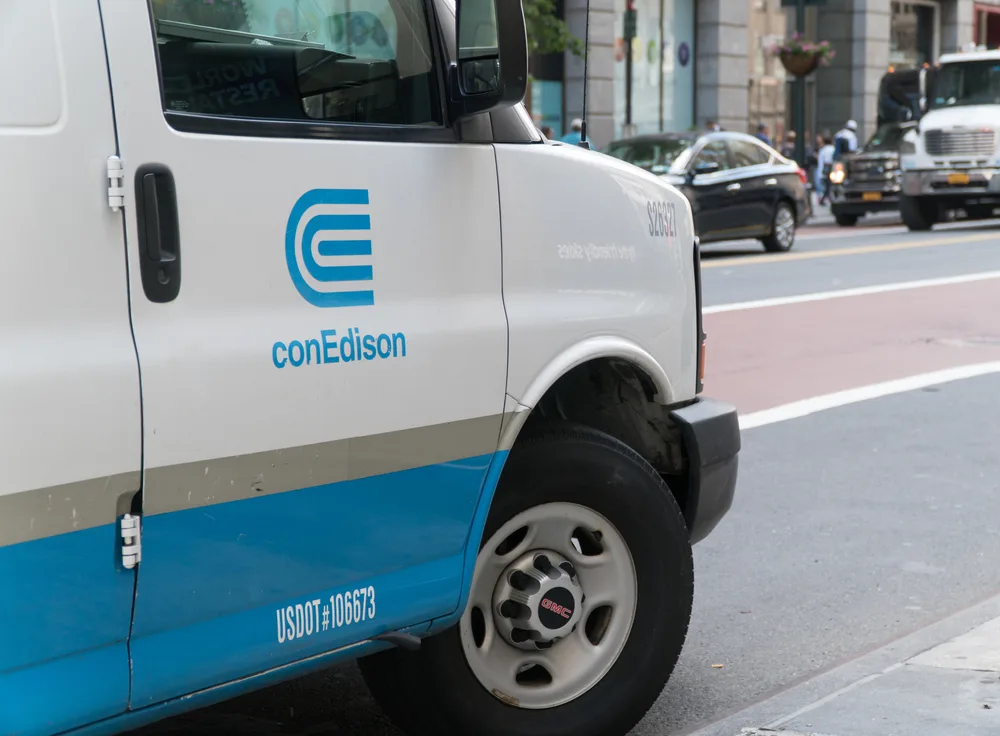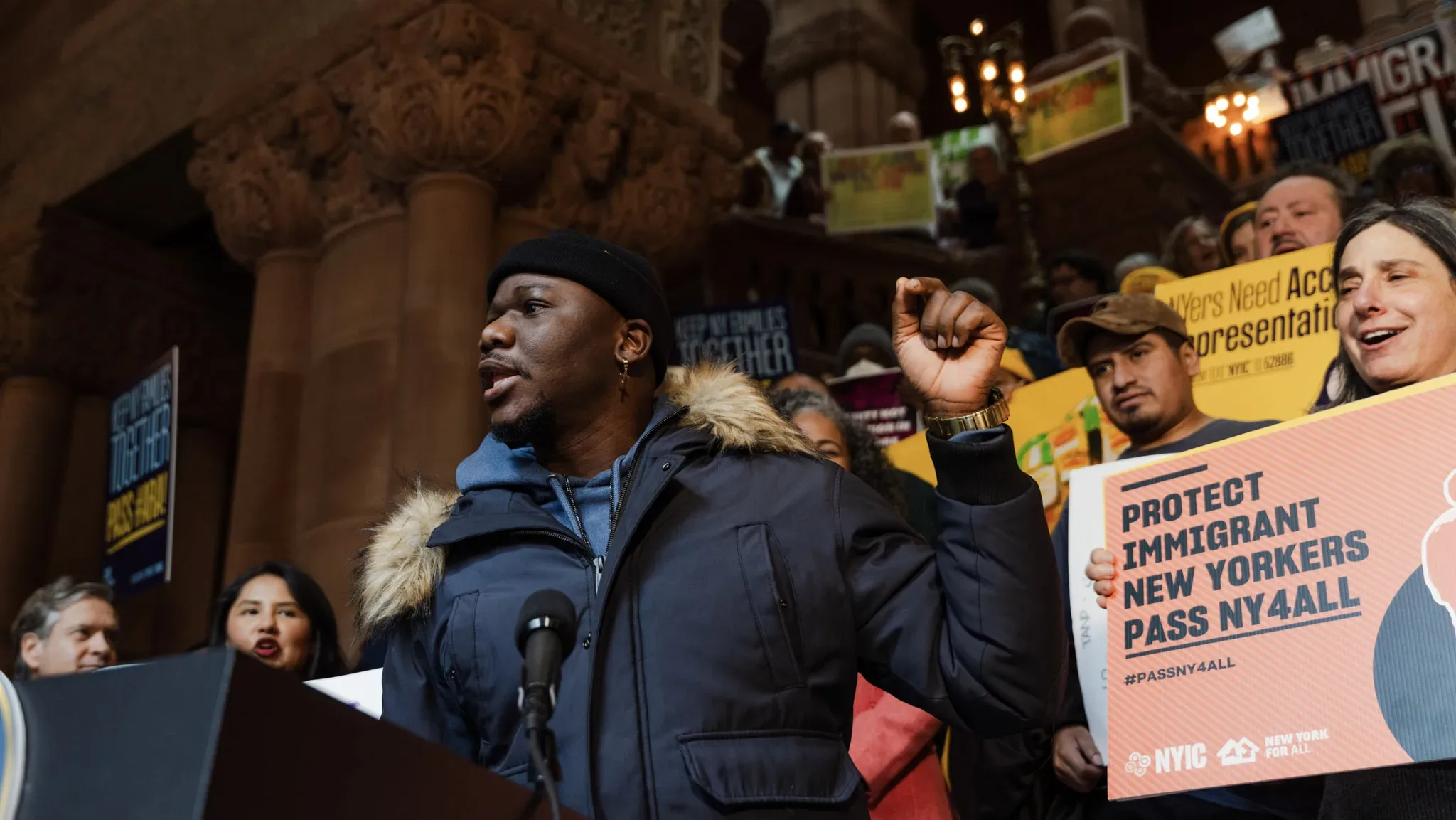After he crossed into Texas, workers at the El Paso bus depot told Tony Rafael Alvarez Vargas that the buses only went to three cities: New York, Chicago and Denver. It didn’t seem to matter that Alvarez Vargas was actually trying to reach Miami, where a friend would receive him. But with no money, Alvarez Vargas reluctantly chose the free trip to New York.
After a two-day bus journey, which began on Saturday, Alvarez Vargas, from Venezuela, arrived. Standing outside the Roosevelt Hotel in Midtown, he waited to see if the staff there could help him catch a flight out of the city. By Monday evening, he said, Roosevelt Hotel workers had ordered him an Uber to Newark Liberty International Airport and bought him a $115 plane ticket to Miami, where he is now staying.
“I didn’t want to come to New York,” Alvarez Vargas, 28, said in Spanish on the sidewalk outside of the Roosevelt on Monday. But in Texas, he says the workers at the bus depot encouraged him to head to New York. “They told me: ‘Go to New York, and in New York they’ll help you. And from there, you’ll go to Miami.’ ”
Also Read: NYC Mayor Adams: “I Don’t Believe the Right to Shelter Applies to a Migrant Crisis”
In recent weeks, City Hall has intensified its campaign to discourage migrants from coming to New York. The administration will be distributing flyers at shelters and intake centers, through social media, and at the southern border with assistance from non-governmental organizations. The flyers say migrants “will not be placed in a hotel” and that the city cannot help them “obtain a work permit,” Deputy Mayor for Health and Human Services Anne Williams-Isom said at a briefing last week, unveiling the flyers, which also read: “You will not be able to easily find work.”
Mayor Eric Adams will also begin a trip to Latin America on Wednesday to visit Mexico, Ecuador, Colombia, and the Darién Gap. He said he plans to dissuade migrants from making their way to New York. “We are going to tell them that coming to New York doesn’t mean you’re going to stay in a five-star hotel,” Adams said at a press conference this week. “It doesn’t mean that the mere fact you come here, you automatically are going to be allowed to work.”
Mayor Adams’ trip follows his asking a New York Supreme Court judge on Tuesday to modify or temporarily suspend the “right to shelter” decree while the city continues to respond to the high number of asylum seekers coming to New York. Advocates from the Legal Aid Society and the Coalition for the Homeless immediately condemned the move in a statement, calling it the city’s “most significant and damaging attempt to retreat on its legal and moral obligation to provide safe and decent shelter for people.” Over the weekend, Ingrid Lewis-Martin, Mayor Adams’ chief advisor, also appeared on PIX-11 and said the federal government should “close the borders,” further heightening the rhetoric around the city’s asylum seeker response. Gov. Hochul used similar language on Sunday when she appeared on CBS, saying that the border was “too open right now.”
“People coming from all over the world are finding their way through, simply saying they need asylum, and the majority of them seem to be ending up in the streets of New York,” Gov. Hochul said.
Despite the city’s efforts to dissuade more migrants from coming to New York, many continue to come to the city in significant numbers. An average of almost 600 migrants have been arriving in recent days, Adams said this week, up from the roughly 300 to 400 number quoted by city officials at various points in the summer. More than 122,000 migrants have passed through the city’s intake system since last spring, and more than 10,000 are arriving every month, according to City Hall.
Many migrants are coming directly on chartered buses from Texas, which have ramped up operations in recent weeks. About 1,600 migrants were bused from Texas to New York between Sept. 22 and Sept. 29, according to rising figures quoted in various press releases from Gov. Greg Abbott’s office.
In El Paso and Eagle Pass, Gov. Abbott directed the Texas Division of Emergency Management to deploy more chartered buses to transport migrants to what Gov. Abbott called “sanctuary cities,” according to a Sept. 22 press release. As of Sept. 29, Texas had bused more than 16,400 migrants to New York since August of 2022, Gov. Abbott’s office said last week. Texas has also bused migrants to Denver, Washington D.C., Chicago, Philadelphia and Los Angeles, Gov. Abbott’s office said.
In turn, New York appears to be using city resources to buy transportation options for migrants arriving at the Roosevelt who boarded these buses in Texas but ultimately had other final destinations.
City Hall and Gov. Abbott’s Office did not respond to requests for comment.
Recently, the intake facility at a shuttered bar next to the Roosevelt Hotel in New York has been full, while the line often reaches outside the room, with dozens of migrants sitting in chairs squished together or laying on the floor. On Monday, Sept. 25, advocates ushered migrants off buses arriving in the rain straight from Texas into the intake center, while some carried their young children and clutched small grocery bags filled with few belongings.
Some migrants, like Alvarez Vargas, told Documented this week that they had little choice but to come to New York, with limited destination options for free transport. Another man who stood outside the Roosevelt with Alvarez Vargas was trying to reach Washington, D.C., and said staff at the Roosevelt had purchased a bus ticket for him.
Rosario del Cid, from Guatemala, faced a similar experience more than four months ago when she got to Texas after journeying to the U.S. from her native Guatemala with her partner and daughter, who was one at the time.
Standing on the sidewalk outside the Roosevelt Hotel this week as her partner carried her daughter, who was asleep in his arms wearing a pink polka dot sweater, she said that through the CBP One App, the family was able to enter the U.S. into Brownsville and was offered a free bus ticket to New York. From what she remembers, Denver, Chicago, and a city in California were also options. Texas Gov. Abbott said in September that there were ongoing state bus operations in Brownsville.
But the first available bus was headed to New York, and if they picked another city, they would have to wait longer in Brownsville, she said. “We didn’t have a specific destination,” del Cid, 24, said in Spanish about her choice to come to the city. “They told us we could come here [to New York] — that they would give us the ticket to come here.”
But others told Documented that they decided to come to the city simply because they were following in the footsteps of friends, family, or others from their same country who had made their way to New York in recent days or months.
For Mairelis, a mother from Venezuela who was traveling with her 12-year-old son, the choice to come to New York had been guided by where her friends and other women she met on the trek to the U.S. decided to go. Mairelis, who shared only her first name for privacy purposes, hadn’t heard or seen any of the messaging from the city that New York had little room and opportunities for migrants, as city officials have said.
She had made the three-month journey from Venezuela to the U.S., through the Darién Gap, with her son as the only family alongside her, and she wanted to land in a place where she could have the support of her friends.
“They were coming here [to New York], and since I was alone, I came here with them, too,” Mairelis, 40, said as she stood with her 12-year-old outside the Roosevelt, hoping to be reunited with her friends who had been sent to separate shelters. She arrived in New York on Sunday on a flight from San Antonio, Texas, and was placed in a hotel room in Manhattan with her son by the evening. “I’m delighted by New York,” she said.
Wagué, a 33-year-old man who had arrived from Senegal and shared only his last name, had returned to the Roosevelt on Monday after he had spent a week in New York. Now, his brother was making his way from Washington to join him, and Wagué was waiting for him on the sidewalk.
Wagué had caught wind that others from Senegal had also come to New York recently — and despite the Adams’ administration’s attempt to spread the word that employment for migrants was scarce in the city — Wagué had still heard that there would be work opportunities in New York. But so far, the reality was different. “C’est pas facile,” Wagué said in French. Or, in English: “It’s not easy.”
